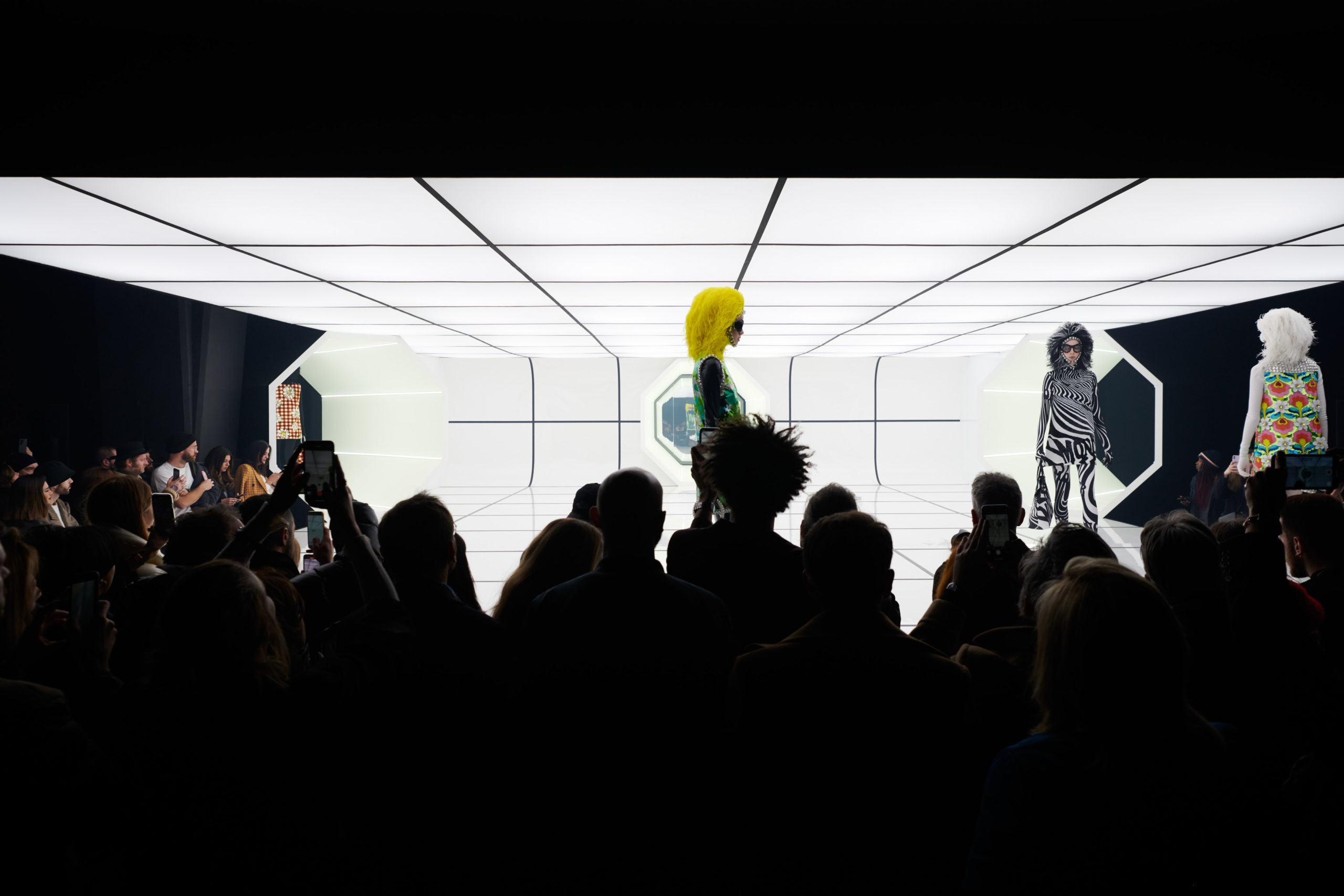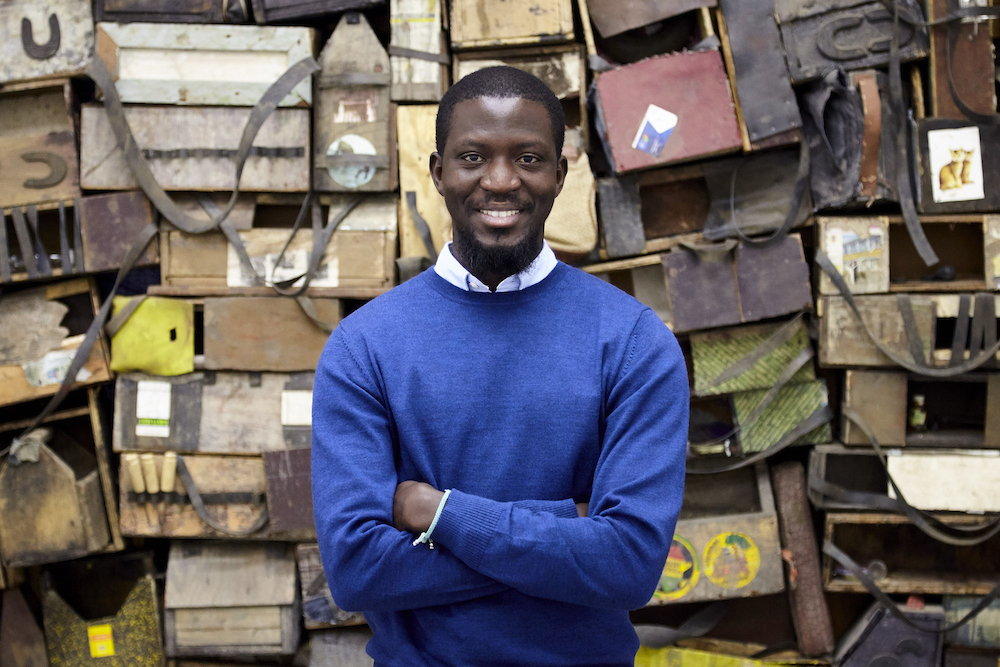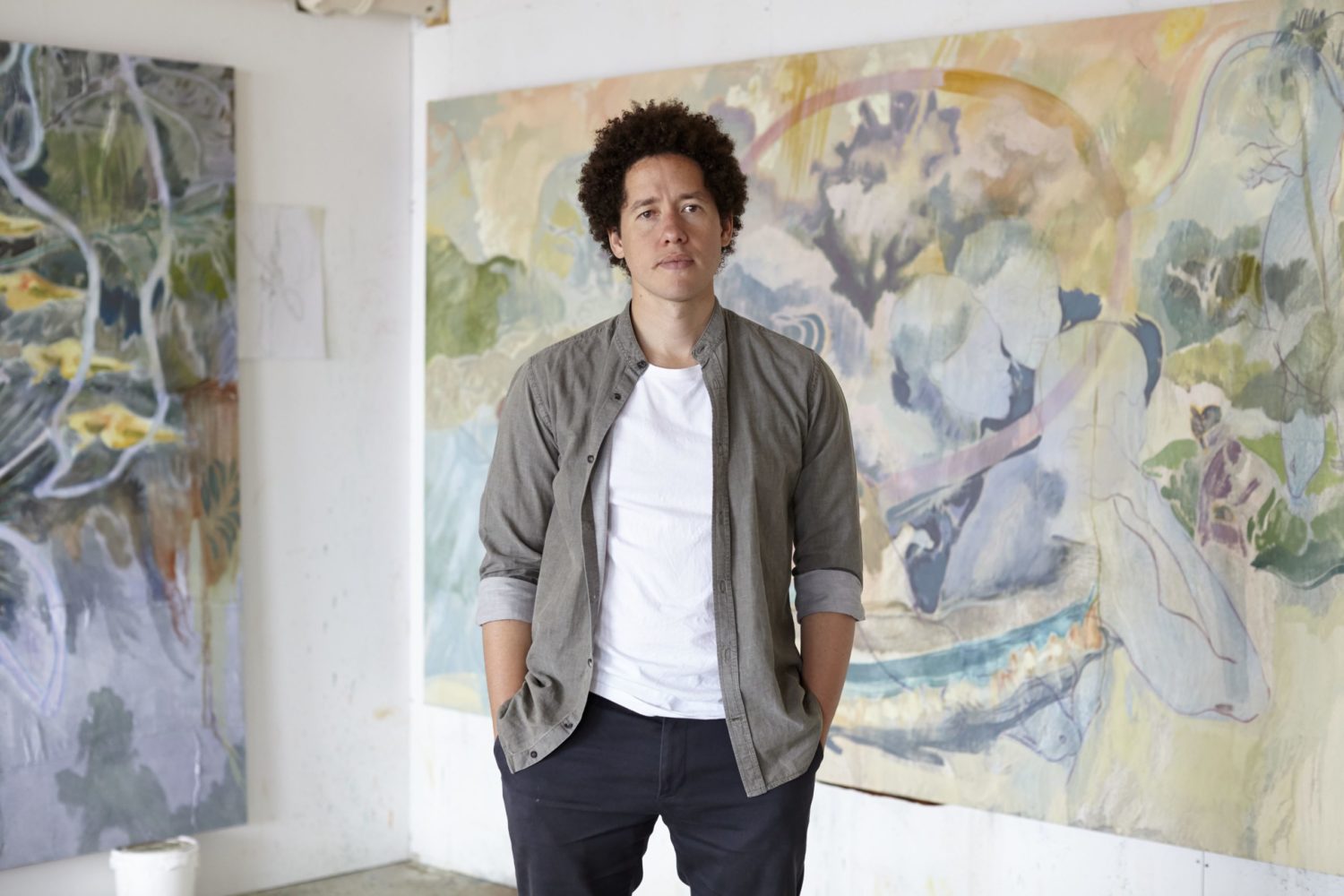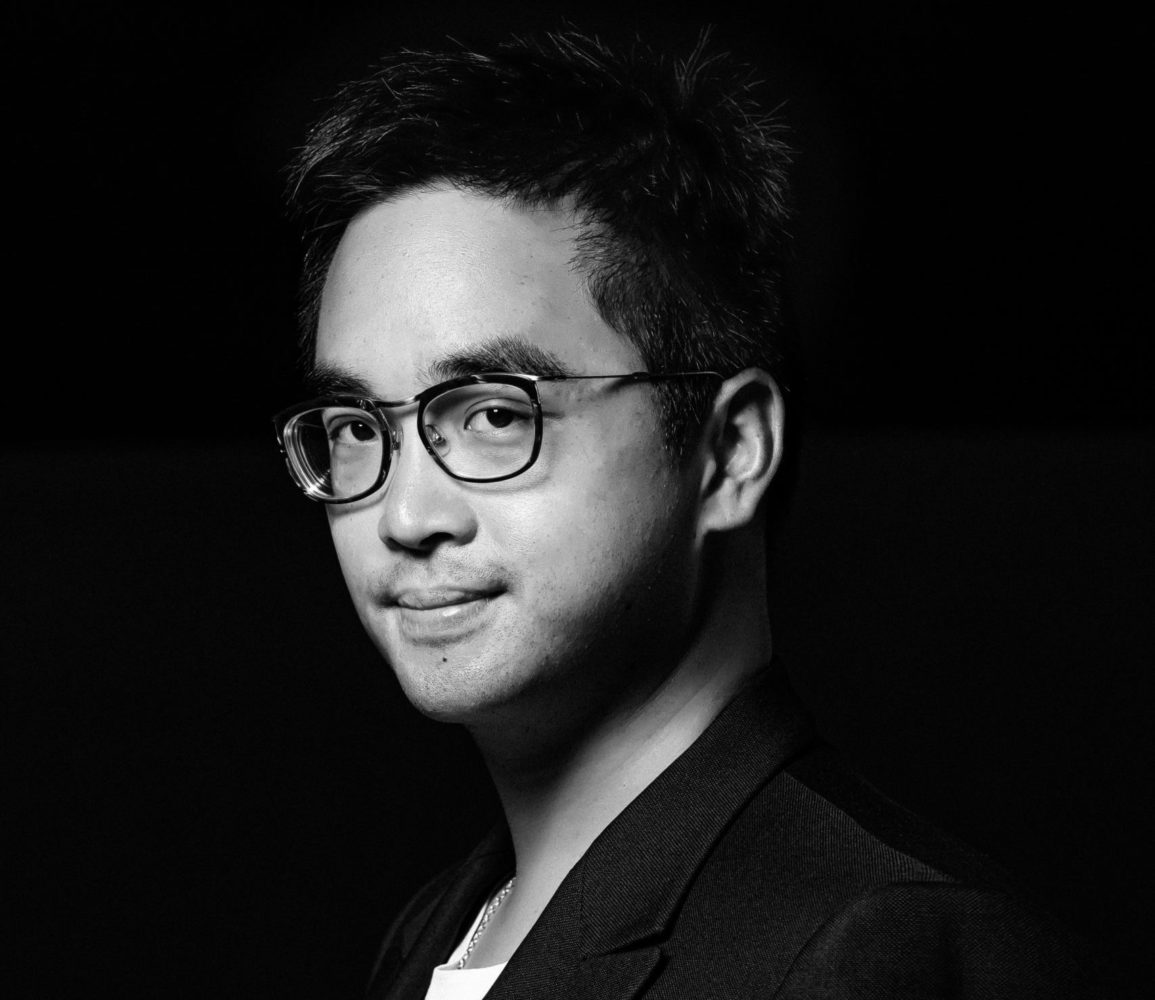A flash mob in Grand Central. A human-sized box of chocolates. A kaleidoscopic Alpine scene. A red room reminiscent of Mars. A pier covered in model-lined scaffolding. These are just a few of the scenarios dreamed up by villa eugénie’s Etienne Russo and Moncler’s Remo Ruffini.
For Moncler’s first show in New York, Ruffini didn’t want to do a typical fashion show. He wanted it to be something else. After meeting Russo through a mutual friend (none other than Thom Browne), the pair set out to create an experience unlike anything else in the fashion week circuit. And after nearly ten shows together—none of which looked like the other, or anything like a typical catwalk—Ruffini wanted to try something else.
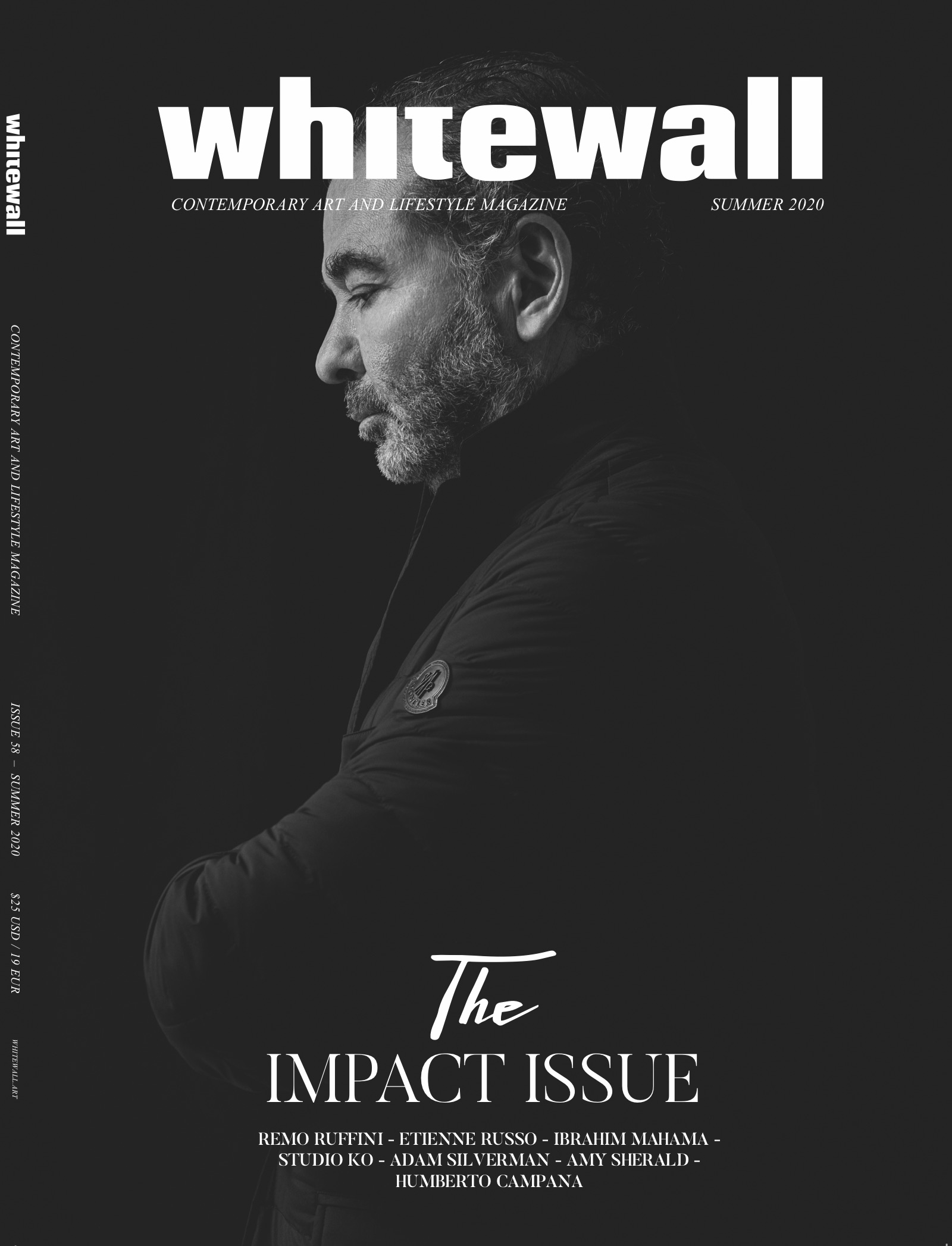
Remo Ruffini, courtesy of Moncler.
Looking to shake up the drudgery of the collection calendar and create something more in tune with a variety of generations, as well as digital consumption and habits, he proposed Moncler Genius, featuring multiple collaborations with names like Simone Rocha, JW Anderson, Craig Green, Richard Quinn, Hiroshi Fujiwara, and more. One house—different voices—and that meant Russo was tasked with creating a variety of immersive presentations under one roof.
When Whitewall spoke with Ruffini and Russo in the spring, a number of things were on their minds. Between discussions around sustainability and major changes afoot in their industries, Italy was getting hit the hardest yet by the COVID-19 health crisis. Moncler was about to announce its funding and support of a new hospital in the Milan region.
No strangers to taking risks and changing things up at the last minute, the pair shared what they imagine to be the future in this uncertain atmosphere.
WHITEWALL: How did the two of you meet?
REMO RUFFINI: We met in 1927 after the first World War [laughs]. No, we met many years ago through Thom Browne when we started to collaborate with Thom. Etienne was in charge of the Thom Browne show, and we decided to work together on Moncler Grenoble after a few months.
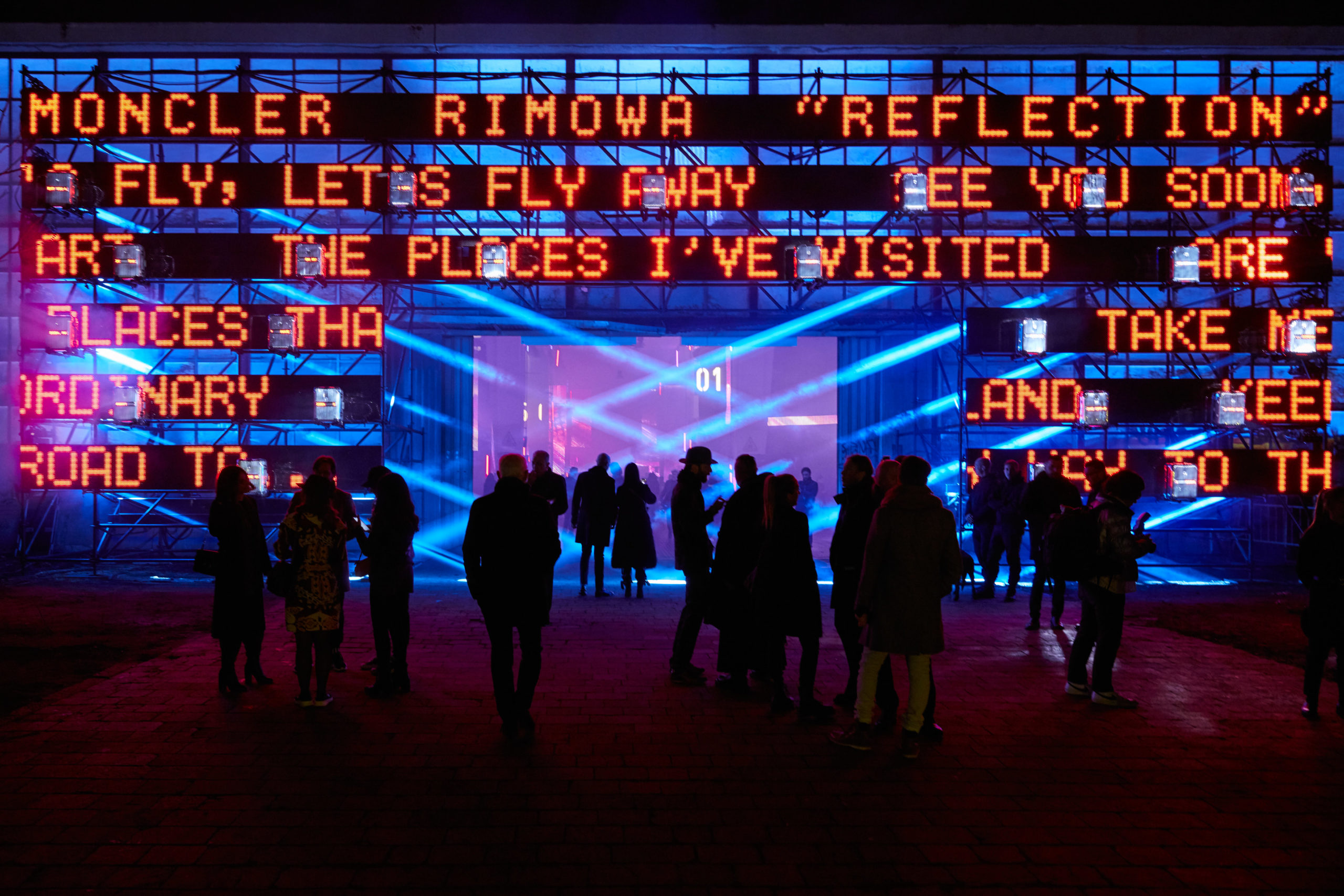
Moncler Genius, Women’s and Men’s Fall/Winter 2020 presentation at Viale Molise 70, Milan, courtesy of villa eugénie.
The first show in New York was an incredible experience, and for the brand was a turning point. It was the beginning of our experience in fashion shows. It’s been a really incredible journey.
ETIENNE RUSSO: In the beginning, Remo told me, “Etienne, I don’t want to do a show. I don’t want to see a catwalk. I want to do something very different. I want to do something that stays in the memory of the people.”
This left a lot of space for creation. It was fantastic to work with such a huge trust. Remo would give me a few words, or we’d have a discussion, and from there we’d go. We did about nearly ten shows in New York. All of them were very different. At Chelsea Piers we had over a hundred guys and girls standing in all-black outfits, a flash mob in Grand Central, a human forest with 280 people, the Valentine’s Day show that was a huge chocolate box.
The only thing that was the same was that we couldn’t repeat ourselves.
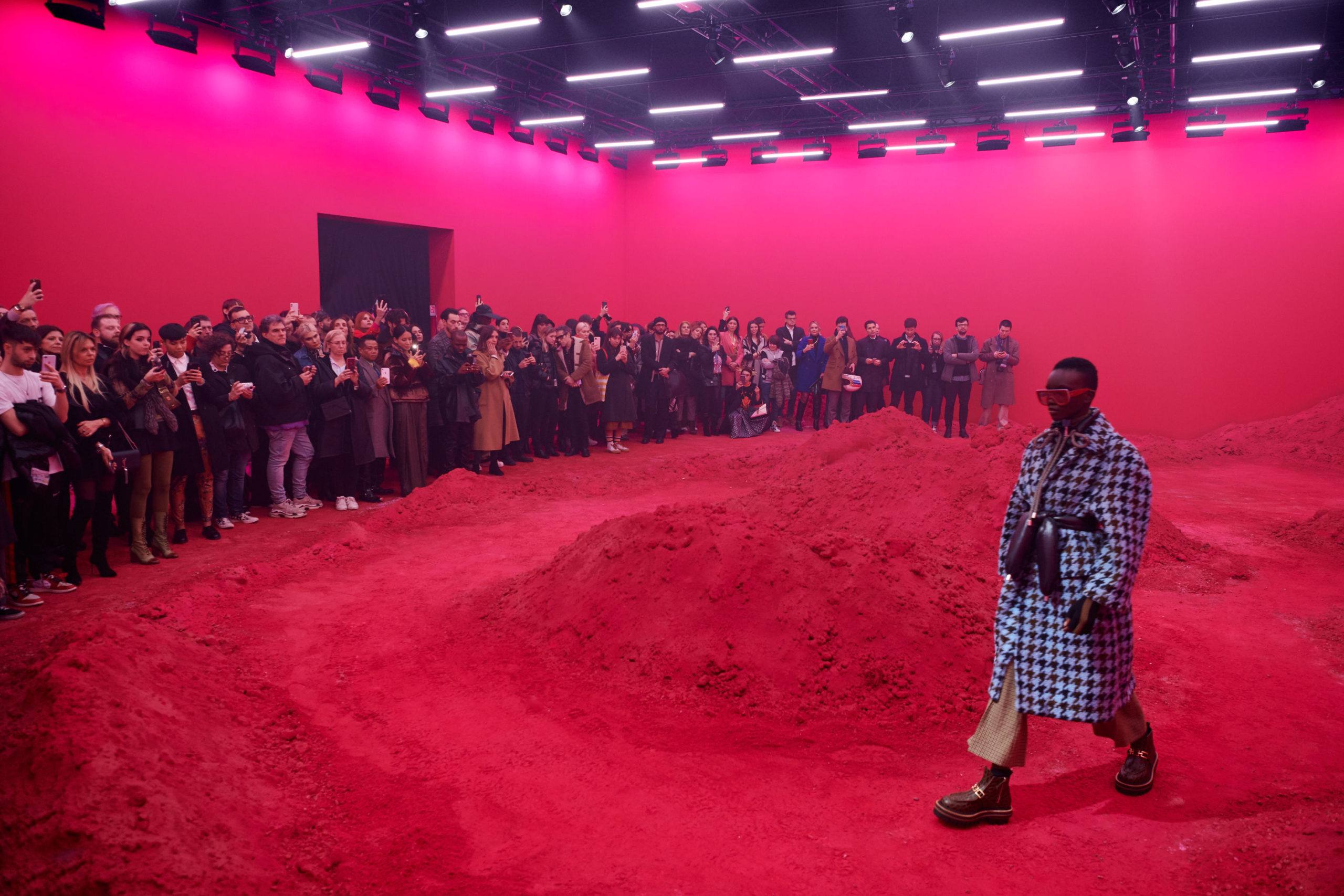
Moncler Genius, Women’s and Men’s Fall/Winter 2020 presentation at Viale Molise 70, Milan, courtesy of villa eugénie.
WW: Where do you typically start when dreaming up the next show?
ER: Our conversations never happen in an office. Sometimes we have dinner or talk on the phone. It was very organic and still is with Remo.
WW: Remo, what made you know that these were the kind of shows that needed to happen for Moncler?
RR: We were a quite small company—born in 1952 in the mountains. I bought the brand in 2003. I tried to move from a sporting goods company into a more luxury attitude. I didn’t have so much money to spend in advertising like big luxury companies. So I decided to do something more unique.
It was the beginning of social media. I thought we needed something more friendly and easy to understand. I think one of the most important things in my career in the last ten years is to give the voice to my customer—to not have too many filters between us and the street.
I give the mood or concept to Etienne, but then the brief is never too long. The idea is to have something totally different than the fashion system—something to attract the attention of normal people on the street. I really felt that making another catwalk show in the luxury world did not make any sense for Moncler.
ER: Remo took a risk—and still does. Like when we decided that a collection should be all black. It was not that way in the commercial collection, but we decided to go for it [in the show] because we wanted a powerful message for Moncler.
WW: And how did the idea for Moncler Genius come about?
RR: Three or four years ago I realized that the people wanted more ideas, content, and product. I realized that the seasonal business wasn’t good for us anymore. We started brainstorming and thought about what we could do to have more content.
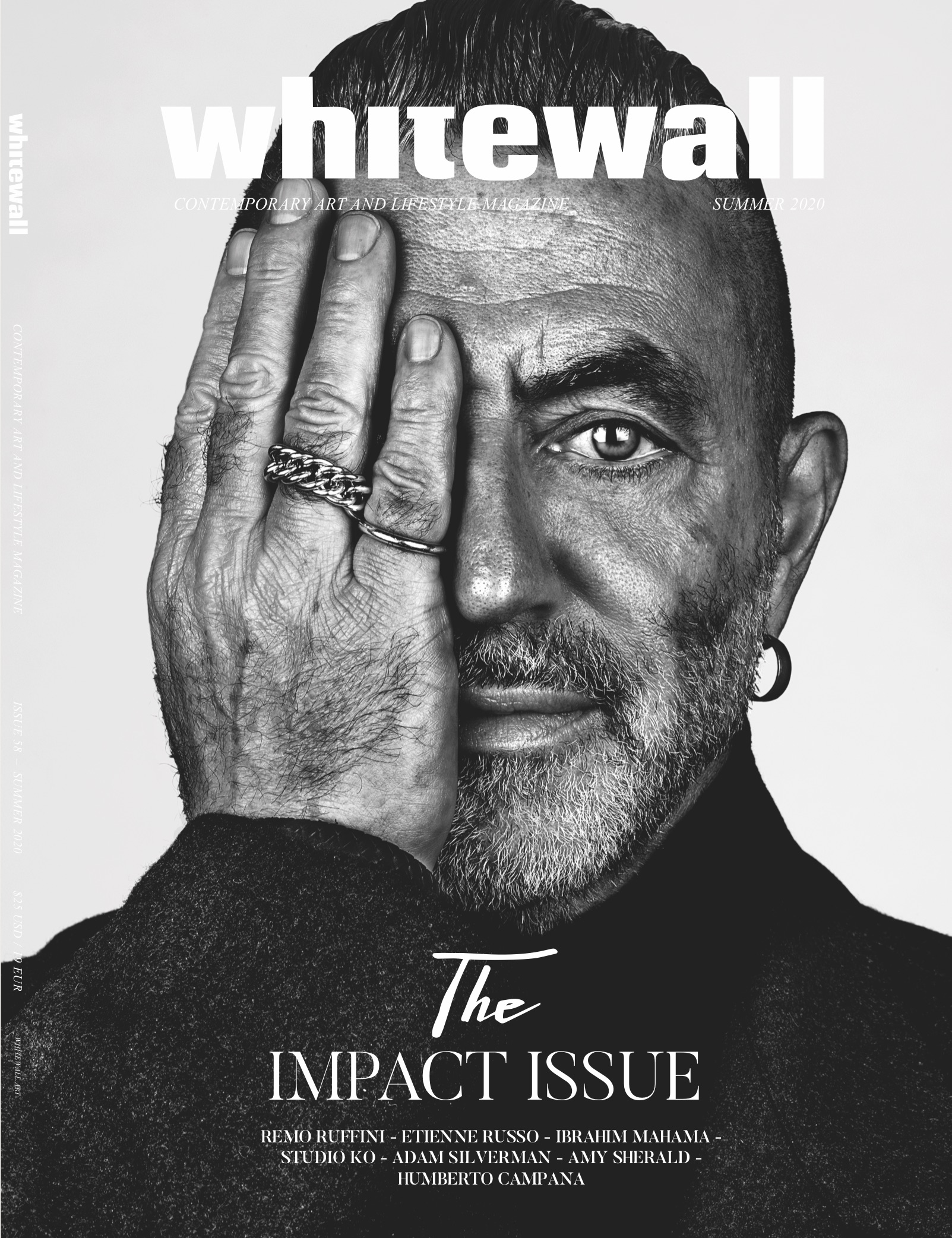
Etienne Russo, photo by Brock Elbank.
When I talked with Etienne, I tried to say what was in my mind—basically to have something every month to attract different generations. To me, it’s very important to attract different generations.
Then, step by step, we designed the building. We started thinking how we could display or show this idea to the customer, to the press, to the wholesalers, and everyone.
ER: Remo came to me and said, “I want to change, but I don’t know exactly how, but I know I have to change.” I said, “Are you sure you want to change now? Because everything is going well!” And he said, “Yes. It’s because things are going well that I want to change.” The concept for Genius came on the go. The first time we finished the concept two weeks before the event.
WW: Remo, for the first Moncler Genius, how did you choose which designers to collaborate with, and what did you tell them?
RR: We are an outerwear company in tune with our DNA and with our roots. My dream was to talk with the kids who love skateboarding and snowboarding, as well as the ladies who love to wear a jacket to go to a special dinner or event.
I started with Hiroshi [Fujiwara], who was, for me, one of the most sophisticated guys in terms of streetwear. I think it was a good language for young kids, but not as banal as some other brands.
Then I was looking for someone more sophisticated for women and started talking with Simone Rocha. It was very romantic, but also very unusual for our brand.
After talking with Comme des Garçons, we decided to talk with the designer in house, for Moncler Noir, Kei Ninomiya. In terms of manufacturing, that was one of the most interesting experiences we’ve had. He made a jacket with 350 pieces all stitched together. It was quite a Genius project.
And Craig [Green], I think, is one of the biggest geniuses in menswear today.
I was really satisfied with the first Genius collection in February three years ago. I went through all the floors and felt that the whole of the collection was Moncler, 100 percent. Sometimes it’s not easy to talk with the creative people and convince them to stay in tune with our brand, as well as with their own creativity. It’s a balance, but at the end of the day I think we really reached the goal.
WW: How did that first presentation feel?
ER: Personally, the success of the audience was one of the best rewards—to see the interest and the smiles on their faces. It was interesting to see the people reacting that night, and we felt that we were going in the right direction. Remo came to me and said, “Etienne, every designer is important, but I want an impact that brings everybody under one umbrella.”
RR: One of the most important things for me was to have a strong effect—to understand that Moncler had totally changed. We’re not talking anymore about fashion shows or collections. We’re talking about the experience. When you walk in, people understood that we were changing something in the industry. We were really doing something different, very unique, and that night the energy was incredible.
WW: With this big success, what did you do next, and were there any challenges to keep up the momentum?
ER: We had more or less the same ingredients, but we had to change the recipe. It was very important to find a venue that wouldn’t compare to the first one to give a very different experience. That’s how we found that venue in Milano next to the station with all the tunnels. The socializing moment was extremely important for Remo, too, to create a space where people could meet and interact. We managed to close part of the street and have fires, a DJ, and drinks.
RR: Honestly, it’s difficult to repeat, but I’m sure Etienne is going to find a solution [laughs].
ER: This is my brief; you see how it happens organically [laughs].
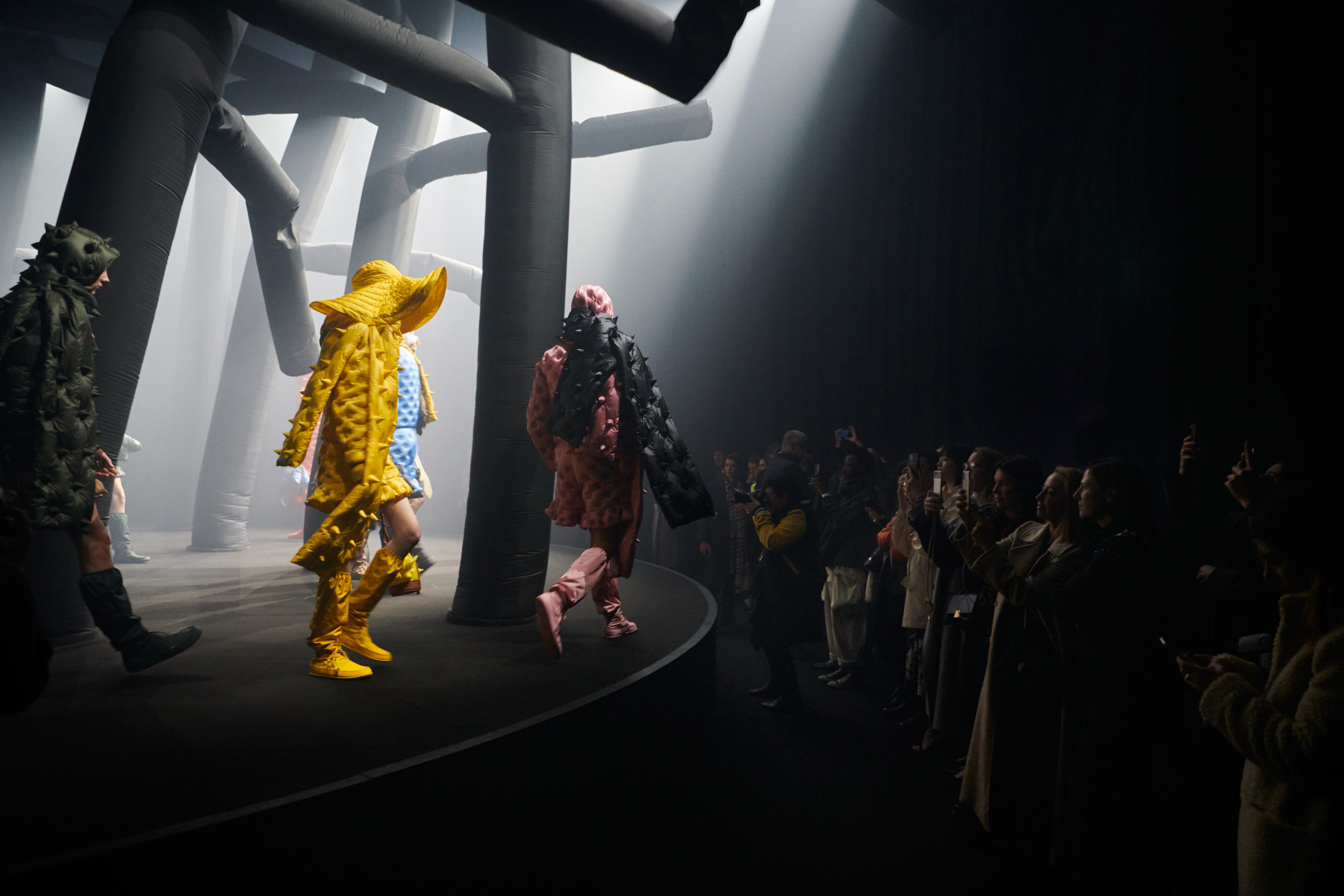
Moncler Genius, Women’s and Men’s Fall/Winter 2020 presentation at Viale Molise 70, Milan, courtesy of villa eugénie.
WW: Has this model opened up what you can do creatively?
RR: For me, it’s very interesting to have a different course for the future. I think this project will for sure sell and make revenue, but it’s more important to give energy to the market and to the customer.
Since the last show, we’ve had a couple of projects that were not part of our production, like Rimowa. I think the energy those gave us was very strong and we want to continue to give strong energy to the public and to the industry.
ER: And on my side, of course, to be working on such a project opens doors and windows, but it’s very difficult to apply to other clients. When you think about it, with Moncler Genius, we almost created a mini fashion week on its own, all in the same day.
WW: Etienne, how do you stay inspired, making the presentation different each time?
ER: Well, first of all, there’s the friendly pressure of Remo as you heard [laughs], which says, “It was fantastic. What is next?”
We always start from the point of view of the collection and what the designer has to say.
We try to have a kind of new language. For example, the last event, 10 days before the opening, we didn’t have the general skin of it. We worked for months on the project, but then it was decided to change to be more sustainable, so we had to rework that.
I like the fact that there was sort of an emergency, because you stopped something that you’ve been working on for months, and have maybe a week or less to come up with an idea that has to be very strong. I like that emergency that motivates you to give your best shot.
WW: Speaking of, how are you thinking about sustainability?
ER: On our side we always try to reuse things, make sure that we avoid plastic as much as possible. We’re also linked to schools and young artists who can come pick up parts of sets afterwards. We are meeting with companies on every project from the beginning to be more sustainable, indefinitely, improving event after event.
RR: For Moncler, it’s one of the major points this year. I think sustainability is something that you have to improve every day. There is not really an endpoint. It means we have to work a lot, and sometimes it’s very difficult—especially when you have an event like we did in Milano—but it’s always in front of us and in different areas.
We’ve done a lot in the last five years. Since 2015 we trace 100 percent of our down and we have public and detailed sustainability commitments.
ER: It’s a long-haul problem and an everyday problem. The whole chain has to change, and I think this takes time, but it’s happening. The goal is to do better every day and to try to find better solutions in the approach of the event.
WW: As we speak, Italy has been hit hard by the COVID-19 pandemic. How is Moncler getting involved?
RR: As you know, the situation was very critical. We found ourselves in the middle of an emergency that we couldn’t even imagine. It was spontaneous to give to Milano and to Italy because I think they’ve given a lot to us in the last years, and we want to give something back and that’s why we supported the construction of a hospital.
WW: As we head into the summer, and look ahead at the rest of 2020, how is Moncler adapting to this new climate?
RR: Moncler has always been characterized by a continuous effort to listen, understand, and interpret the spirit of the time—a kind of ambition to try to become what people need us to become while remaining faithful to ourselves. Today we are ready once again to let the zeitgeist inspire us and to inspire what is around us.
WW: What kind of lasting impact do you think this will have on the luxury industry?
RR: I think it is too early to say which will be the impact of all this on consumers’ habits and attitudes. Difficult to say if everything will change or if everything will remain the same.
What is sure is that companies must be flexible and ready to change and evolve. I mean, for it is the right time to boost digital, to establish a closer and more supportive relationship with the supply chain, to invent new ways to present and sell the collections, and to reconsider how to engage with clients.
ER: It is rather early to speculate on the actual lasting impact the current situation will have on the industry—yet drastic changes are obviously taking place in the short term, and mid-term strategies are in the making at the moment.
Integrating comprehensive digital options has become crucial, even more propelled in the past couple of months. Enabling a more enriching and experiential involvement for the people who are not on site, broadening the brands’ communities, is the clear focus today.
A lot is evolving quickly within the luxury industry, the whole fashion world is shifting, the way of addressing business will necessarily be reshaped, redesigned in order to flourish.
Uncertain yet exciting times ahead, if you ask me.
WW: With Moncler Genius, you’re already comfortable disrupting the industry model. Given that, do you feel more prepared to address what comes next?
RR: Surely, Genius has certainly been a great training field for all of us, and it deeply affected our culture, helping to make us more inclusive, flexible, and reactive than ever. Now we will keep on building on what we have learned.


